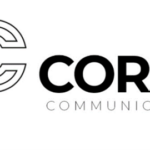
Recently, the leading influencer marketing organisation, theSALT, conducted an extensive survey across their database of 325 000 nano influencers to gain deeper insights into how people get into influencing, what their experiences have been, and what learnings they could share to the benefit of influencer marketing campaigns, and the broader marketing industry.
“We set out to conduct the largest research survey of its kind with our extensive database of nano influencers. Every respondent that took part had recently been involved with one of our influencer campaigns,” says Albert Makoeng, Head of Sales at theSALT. “The results uncovered that the conversations held by the influencers about the brand went beyond the obvious posts online, into the real-world and onto dark social, which is incredibly powerful in the world of word-of-mouth marketing. In all, this survey has some unique and important insights when it comes to preferred platforms, emerging trends, and the true value of word-of-mouth recommendations.”
Who was interviewed?
73% of the 853 survey respondents were women and 26% were men. The majority fell between the ages of 25 and 33, with 55% reporting a monthly income of up to R19 999, and interestingly, 10% reporting a monthly income of over R40k. When asked how they become involved in nano influencing through theSALT, 91% reported hearing about it from a friend or on social media, illustrating the importance of referrals to this community. 98% added that they had gone on to recommend theSALT to someone in their community, proving that when the promotion is authentic, the advocacy tends to take place – even in the absence of a financial incentive to do so.
How important is nano influencing?
78% of the survey respondents said the money they’d earned from campaigns was “very needed” or a “lifesaver”, while 17% advised they’d saved the proceeds, proving influencer marketing’s importance as a side hustle that complements one’s main profession. With ongoing challenges faced by young South Africans in the workplace, the ability to advocate for brands in a side hustle, such as nano influencing, results in a meaningful opportunity, both for the influencer and the brands they work with, serving as an important key driver of this type of marketing.
When asked what the money they had earned was spent on, the two primary results were household expenses and savings/school expenses, which shows that the money from nano influencer activity is constructively put back into the communities, and the economy. This makes the R72-million that theSALT has paid to influencers to date all that more impressive!
What’s their online activity like?
To be effective on social media, there’s a need for a regular cadence in posting and engaging with others. Nano influencers who were surveyed had an inherent understanding of this, with 90,5% reporting they posted weekly or more.
When it came to the question of what they post, most respondents said they post about “family or friends” and “hobbies or interests”, which affirms the reputation of nano influencers as building authentic followings through real engagements with real people on real topics or areas of interest. This is what makes the potential impact of nano influencer campaigns so very powerful.
On the question of where they preferred to post, Instagram came out as a clear first choice, with Facebook as a significant second. Interestingly, while it’s not been around for as long as the Meta stable of social media platforms, TikTok came in as a firm third choice, suggesting a growing influencer marketing trend that’s worth keeping an eye on.
How did theSALT’s data-driven approach play a role?
TheSALT uses in-depth lifestyle information to inform the connection between brands they work with and the nano influencers they recommend. The positive impact of this approach was confirmed through the survey results, which showed that 76,5% were existing customers of the brand they worked with, and an additional 17,5% were already potential customers. The matching capabilities of rich data ensures authenticity because there is a high natural affinity between the nano influencer and the brand, resulting in content that’s authentic and impactful.
When asked to indicate how their relationship with the brand had changed since being part of a nano influencer campaign, none of the people surveyed reported a negative reaction, while 76% went on to say their affiliation to the brand had been reinforced, making them firm fans for life!
Were the campaign conversations limited to social media?
Despite there being no campaign requirement to do so, more than 91% of the nano influencers reported having dark social (i.e.: Whatsapp) and in-person conversations regarding their campaign. Because theSALT conducts campaign training for nano influencers as a critical ingredient, empowering them to have informed brands conversations with accuracy and authenticity, 95% of the nano influencers were able to put this knowledge to use on social media and within the context of these high value one-on-ones.
What were the broader insights for influencer marketing?
When asked how they’d feel about a sample recommended by family, friends, or colleagues vs. someone they didn’t know, 76% said they would be very trusting to try the sample, and 15% said they would be slightly more trusting. This reiterates the higher value of a recommendation made by someone you know, or feel you know, and therefore the higher value of recommendations made by nano influencers to their communities.
As a corollary, when asked if they would feel comfortable offering samples to friends and family, and gathering feedback as an additional opportunity, 98% said they would, presenting an exciting opportunity for brands to tap into 325 0000 nano influencers primed to assist with sampling and the gathering of feedback.
“We’re incredibly excited about the results of the survey because it confirms so much of what we know, while illustrating the importance of the processes we’ve put into place – both for the brands, and the nano influencers that we work with,” said Makoeng. “Our hope is that the knowledge gained from this survey informs the way brands look at nano influencer campaigns and the opportunities they present, while setting an industry standard for how nano influencers should be treated and rewarded for their efforts.”
- MRF Unveils Latest MAPS® Data - 20th February 2025
- The BRC announces changes to the board and updates for 2025 - 17th December 2024
- Top 50 DSTV TV programmes – October 2024 - 12th November 2024





